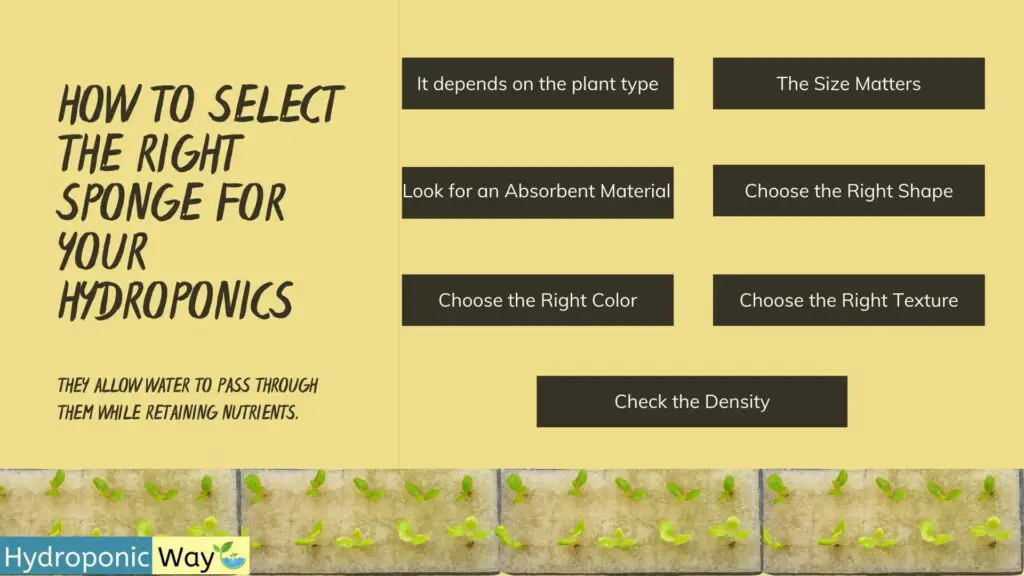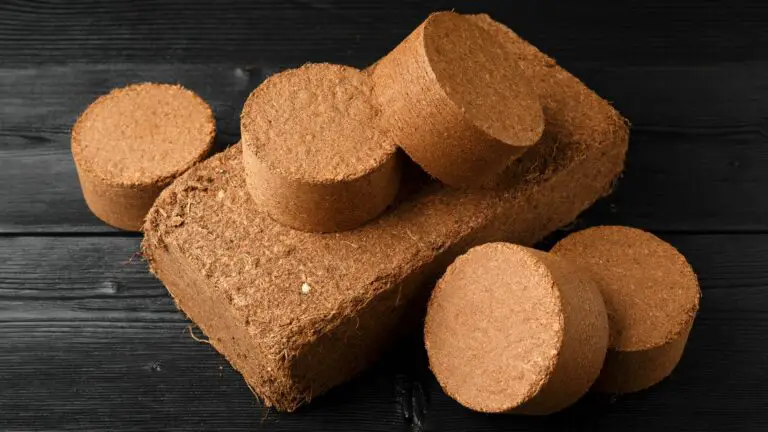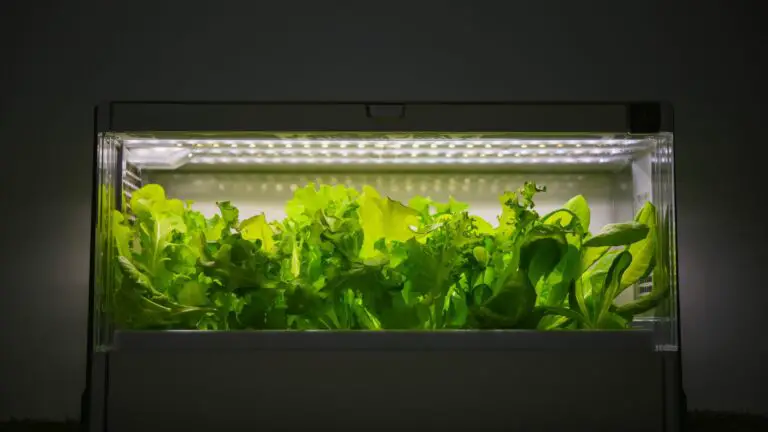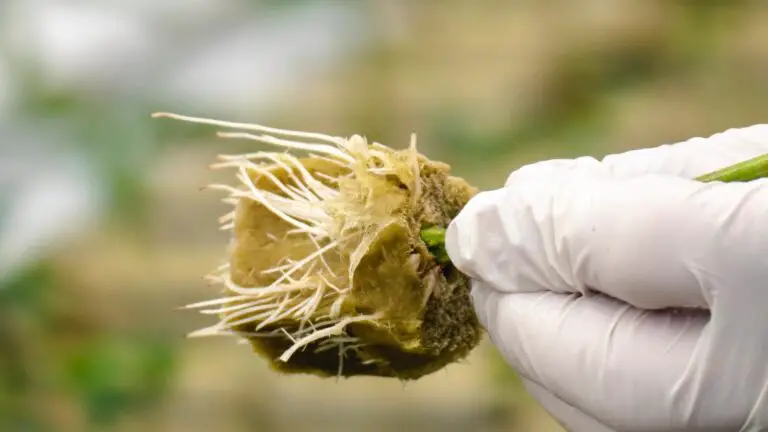How to Choose the Right Hydroponic Grow Sponge for Your Plants
Disclosure: Your purchases through our links may earn us a small commission, supporting our site’s ability to provide valuable information to our readers. Rest assured, it won’t impact your price. Thank you for your support.
The most effective technique to cultivate vegetables in a home garden is with a soilless medium that allows water to spread deeply into the soil. This type of growing system is called hydroponics.
Sponges are used in hydroponic gardens as a medium for growing plants. They are made up of materials that allow water to pass through them while retaining nutrients. This allows the plant roots to absorb these nutrients directly without going through the soil.
When plants are grown in a hydroponic system utilizing sponges, it’s critical to use the proper one. There are several different types of sponges on the market, and choosing which is appropriate for your plants might be difficult. This blog article will go through some of the various sorts of sponges available and assist you in determining which one is best for your needs!
The Different Types of Hydroponic Grow Sponges
The two types of hydroponic grow sponges are cellulose and polyurethane.
- Cellulose sponge is made from wood pulp and is the most popular type used in hydroponics. It’s highly absorbent, durable, and easy to find. However, it can break down quickly if not cared for properly.
- Polyurethane sponge is a synthetic sponge that’s more expensive than cellulose but lasts longer. It has excellent water retention and drainage properties.
Now that you know the different types of hydroponic grow sponges. Let’s look at how to choose the right one for your plants!
How to Select the Right Sponge for Your Hydroponics
There are different types of sponges available for use in hydroponic gardening systems. They come in various shapes and sizes, with some being more suitable than others for certain applications.
The best sponges for growing plants in water are made of natural materials that won’t leach chemicals into the soil. They should also be easy to clean and maintain.
So, when choosing the appropriate sponge, what should you consider?
1. It depends on the plant type.
The type of sponge you’ll need depends on your growing plants. A cellulose sponge is a good option if you’re growing leafy greens or herbs. For flowering plants or vegetables, a polyurethane sponge is a better choice.
Related: Best plants for hydroponics to grow under a grow light
2. The Size Matters.
You’ll need to decide how big of a sponge you want before you buy one. Larger sponges are better for larger plants because they provide more surface area for roots to grow on. Also, smaller sponges are better suited for smaller plants because they allow more airflow through them.
3. Look for an Absorbent Material.
There are two main types of sponges used for hydroponics: natural sponges and synthetic sponges.
Sponges made of natural materials such as coconut shells, bamboo, and wood are absorbent and hold water well. However, these sponges tend to be expensive.
Synthetic sponges are made with polyurethane foam. These sponges are more durable than natural sponges. Synthetic sponges are cheaper than natural ones but do not hold as much water. They also tend to be less absorbent.
4. Choose the Right Shape.
If you’re looking for a sponge that’s easy to clean, go with a round shape. Round sponges are easier to wash because there’s less surface area to get dirty.
Square sponges are harder to clean because there’s more surface area to get dirty, so they require more frequent cleaning
Sponges cubes are reliable for germination and absorbent.
For seedling purpose there are slab type sponge sheets to buy.
Cone shape sponges are available as well. Cone sponges are great for aerating the roots of your plants.
5. Choose the Right Color.
When choosing a sponge, you should also consider how much light your plant will receive. Plants need at least 6 hours of direct sunlight each day to thrive. So, if you plan on using a sponge indoors, select the right color to let in some light.
Related:
Grow Light vs. Sunlight: Which is Better Option for Your Garden?
Cheap Grow Lights Alternatives Used in Indoor Hydroponics
6. Choose the Right Texture.
A good hydroponic grow sponge should feel soft and spongy to the touch. It should not be too thick or thin. It should feel firm and not too soft. If you use a sponge with too few holes, it won’t allow water to pass through. And if you use one with too many holes, it will clog up quickly. You should also test out the sponge before using it.
7. Check the Density.
Check its density if you are looking for a sponge with high absorption capacity. A sponge with low density will hold more water than one with higher density.

The Benefits of Using a Hydroponic Grow Sponge
There are many benefits to using a hydroponic grow sponge, including the following:
- Increased water retention: hydroponic grow sponges help plants retain water for longer periods, which is beneficial during hot summer days.
- Improved drainage: hydroponic grow sponges improve drainage in your growing area, which helps prevent waterlogged roots.
- Better aeration: hydroponic grow sponges provide better aeration for your plant’s roots, which helps them grow healthier and stronger.
Tips for Keeping Your Plants Healthy With a Hydroponic Grow Sponge
Here are a few tips for keeping your plants healthy and happy with a hydroponic grow sponge:
- Be sure to change the water regularly. Depending on the type of plants you’re growing, you’ll need to change the water every one to two weeks.
- Inspect your sponge regularly and replace it if it starts to break down.
- Keep an eye on your plants and ensure they’re getting the right amount of water. Too much or too little water can cause problems.
By following these tips, you’ll be sure to have success with your hydroponic grow sponge!
Click here if you want to select the best grow sponge for your hydroponic system.
Bottom Line
If you’re looking for a way to improve your home garden, consider using a hydroponic grow sponge! With the proper care, it will last for many growing seasons. You can find different types of hydroponic grow sponges at any gardening store and online retailers like Amazon.com.
Thanks for reading!



